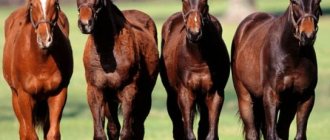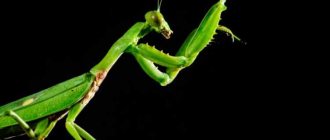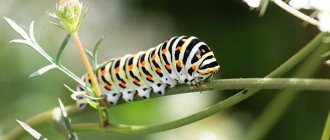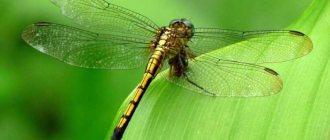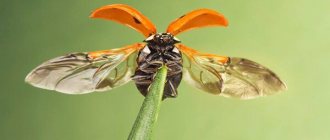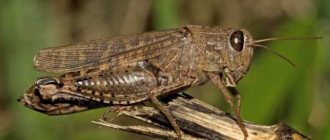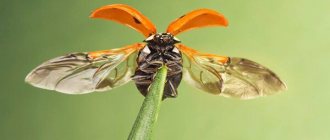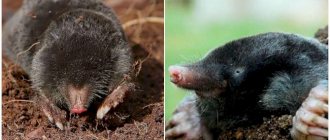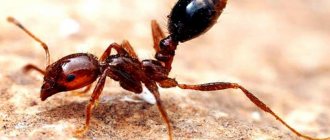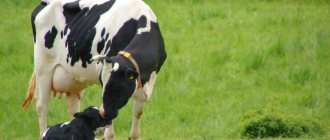- Appearance
- How do ferrets behave in the wild?
- How long do ferrets live?
- Types of ferrets and their habitat - Steppe - Forest - Black-footed, or American
- What do they eat in nature?
- Reproduction and offspring
- Who is dangerous for a ferret: the main enemies
- Population and species status
- Domestication of the ferret
- Conclusion
One of the most interesting animals that are representatives of the mustelidae family are wild ferrets.
Small in size, but active and inquisitive, ferrets are a cross between a dog and a cat. This predator cannot be called too aggressive, but in case of danger it can stand up for itself. People have been watching ferrets for a long time and realized that they can be domesticated. Ferrets are very playful and interesting pets, with whom you will never be bored.
Anyone interested in the animal world will be interested to know what ferrets eat, what lifestyle they lead, how they reproduce and how they can be domesticated.
Appearance
Not all people know what a wild ferret looks like. Adults can be from 30 to 50 cm long. They have an oval, laterally flattened head, which smoothly turns into a long flexible neck and an elongated body. The legs of this animal are very short - no more than 6-8 cm. Small ears and button eyes sticking out in different directions are the distinctive features of the ferret. The shape of the nose of these animals is similar to a cat, but they have a more elongated muzzle.
Beautiful, dense and soft brown-black fur is short in length, but on the back it can be up to 6 cm long. The fur becomes fluffier before winter after molting. Ferrets also have other distinctive features - white spots near the ears and chin. Sometimes you can find ferrets with white undercoat on the sides of their bodies. Even less common are ferrets with completely red fur or white ones - albino.
Ferrets are always distinguished by their miniature, graceful physique. This is necessary so that they can fit into even the narrowest hole. The limbs of ferrets have five fingers with sharp claws, which serve the mammals both as protection and as an excellent “tool” for digging a hole.
Pastel group
Animals of this group are characterized by very light fur. Unlike albinos, their fur is colored from light beige to light brown. At the same time, the fur is colored unevenly, creating a tinted effect. What stands apart in this group is the cinnamon color, in which the hair has a pronounced orange or reddish tint.
Light pastel (Champagne) Pastel (Pastel) Dark pastel (Chocolate) Cinnamon (Cinnamon)How do ferrets behave in the wild?
The ferret is a predatory mammal and is related to all members of the mustelid family: stoats, weasels and minks. Ferrets can be of four types. Of these, three live in the wild, and the fourth species, the ferret, is domesticated.
This decorative variety was created by people specifically to be kept along with dogs and cats. Previously, ferrets were even kept to hunt rabbits with them.
Ferrets in the wild are predatory animals, and as such they are required to be bold, alert and fearless. If suddenly they encounter a much larger enemy on their way, the animals will not be afraid and will accept the challenge. In addition, they do not doubt their abilities and remain true to themselves when it comes to getting food.
A ferret can attack a bird's nest, eat all the eggs, and, if possible, deal with the adult birds. These mammals do not form packs, but maintain contact with their relatives. Usually in a small group there is one alpha male, who dominates not only during the mating season, but also during normal times. Each of the animals occupies its own territory of residence, marking its boundaries and regularly making the rounds.
Ferrets are most active in the evening and at night. During the day, the ferret usually sleeps in a dug hole. Their place of residence can be either permanent or temporary, but always with a small hole. If ferrets move around the territory before dawn, they decide to settle down for the night in unoccupied holes of others - a hare or a badger. And if the weather conditions deteriorate, it becomes rainy or windy, the ferret may not leave his hole for several days. He certainly lines the house with grass and leaves to make it warmer. In winter, ferrets can climb into barns, basements, sheds, and storage rooms.
Colors
There are a huge number of colors that experts are trying to classify and organize. There are two types of color classification - American (AFA) and Russian, adopted in 2012.
The American classification provides for the division of ferries according to the following criteria:
- color;
- color scheme;
- location of white spots.
When determining what color an animal belongs to, pay attention to the following features:
- Color. Color of fur, underfur, nose and eyes.
- Markings. The presence and color of spots different from the main color.
- Mask. The color of the pattern on the animal's face.
The Russian classification divides ferrets according to fur pigmentation into the following groups:
In nature, there are single-colored ferrets of different colors - white, red, brown, black. There are a great variety of shades among domesticated ferrets. When determining the breed, in addition to the color of the coat, the color of the nose and eyes is taken into account. Popular colors:
- White black eye (DRYU/DEW). Animals of this color are similar to albinos - they have the same white fur. But the eyes are not red, but black. Nose of any color - usually pink or black.
- Albino. He has white or light cream fur, red eyes, and a pink nose. The underfur is white. These beautiful animals are active and energetic, but love to sleep in the afternoon.
- Champagne. The main color is beige or milk chocolate. The underfur is white, golden, soft cream. Eyes pink, beige, light brown. The nose is pink or light brown.
- Cinnamon. The base of the guard hairs is white, the edges are rich brown with a reddish or reddish tint. The underfur is cream or white. The eyes are any, and the nose is beige or brown.
- Cinnamon self. The guard hairs are deep brown with a red or orange tint. A difference between the color of the body and paws is allowed. The mask is almost invisible. The down is creamy. The eyes are any kind, and the nose is brown.
- Chocolate. The chocolate ferret has brown guard hairs. A slight difference in the shade of the body and paws is allowed. The mask is almost indistinguishable against the background of the main color. The underfur is cream and chocolate shades. The eyes can be anything, usually black or ruby. Nose – brown or pink.
- Black. The guard hairs are uniformly black, painted along the entire length with one color. The mask is almost invisible - it merges with the main color. The underfur ranges from light cream to gray-brown shades. The eyes are any, and the nose is black.
https://fermoved.ru/horki/domashnie-horki.htmlhttps://ferrethome.ru/raznovidnosti-xorkov/https://ferma.expert/jivotnie/horki/porody-horki/vidy-porody-i-okrasy- horkov/
How long do ferrets live?
In the wild, ferrets live in completely different areas: in the steppes and on the edges of deciduous forests, they inhabit mountain ranges and can be located in ravines, semi-deserts and sometimes even settle near humans. But such a “neighborhood” hardly makes people happy, because ferrets often commit robbery: they kidnap chickens or rabbits.
How long a ferret will live depends on its species and living conditions. For example, the average life expectancy of a steppe ferret is about 10-12 years. Forest ferrets, on average, live about 14 years. This is much longer than the lifespan of domesticated mustelid mammals. And the average lifespan of the American ferret species is about 8 years.
Where does he live?
The habitat extends to the territory of Eurasia and the northwestern part of the African continent. Most often found in Russia, China, England, and Ukraine.
Animals live in small forests and isolated groves. They prefer not to go far into the forest; they like to settle on the edges and clearings. Forest ferrets lead a sedentary lifestyle and are very attached to their chosen place. They occupy a small area and most often use natural shelters as permanent shelters - stacks of firewood, rotten stumps, haystacks, dead wood. They almost never dig their own holes; they can live in offshoots of badger or fox holes.
Types of Ferrets and Their Habitats
There are several types of ferrets and each of them has distinctive external features. Ferrets also differ in their habitat and lifestyle.
Stepnoy
These representatives of the mustelid family are among the largest: their body length can reach more than 50 cm and their weight exceeds 2 kg. Sometimes these ferrets are called white, due to the fact that on the sides of the body they have a light undercoat that is visible under the brown hairs.
The front part, starting from the chin and including the front legs, is dark, almost black. There is also a dark stripe running down the back and onto the tail. The ferret's limbs are also dark in color, and there is a white “mask” on its face.
This species of ferret lives in central Asia, China, Romania, Ukraine, Hungary, the Czech Republic, and also in Russia. Moreover, in our country they are common in many regions, from the territory of the Ural Mountains to the regions of the Far East.
Forest
The forest ferret is an interesting representative of the fauna, but it is much smaller in size than its steppe relative. The ferret's body length is about 45-50 cm, and its weight cannot exceed one and a half kg.
The color of the forest ferret's coat allows it to hunt without being noticed. The black-brown color of the coat is marked throughout the body, including the limbs, and only on the muzzle - near the nose and chin - there are white spots. There is also a white border on the ears.
This ferret is distributed almost everywhere: it is found in both Europe and Asia. On the territory of Russia you can also meet this forest inhabitant.
Blackfoot, or American
This type of ferret is characterized by its very miniature size. The body length of adult individuals does not exceed 40 centimeters. The coat of these animals has an interesting color: the body is most often white and red with a black stripe on the back and a black tip of the tail. Ferrets' limbs are also black. Dark spots are also present on the face: they are located around the eyes and on the forehead. This specific “mask” makes the animals look like a panda.
The American ferret is listed in the Red Book, as its numbers have decreased significantly recently. This rare species of ferret lives only in central North America.
Group of pastel selfies
The group is characterized by the fact that the spine (regardless of its color) is completely colored. Due to this, the frets of the group lack shading. The base color ranges from dark brown in chocolate to snowy white in Dew.
Chocolate self Chocolate solid Champagne self Cinnamon self DewWhat do they eat in nature?
Many people who study the animal world are interested in what a wild ferret eats. It turns out that this mammal in the wild preys on other smaller and weaker animals:
- Mice;
- Rats;
- Krotov;
- Zaitsev;
- Khomyakov;
- Rabbits;
- Lizards;
- Birds.
The ferret is very agile and flexible, he can quickly pursue his prey, but most often the animals watch for their lunch near the victim's hole. In the spring, ferrets often climb into hare dens, preying on defenseless cubs.
In difficult, hungry times, animals do not disdain carrion, eat food waste, and make predatory raids on chicken coops and rabbit farms. It is very interesting that during the cold season, ferrets make pantries with food reserves so that they have something to feed themselves during difficult periods.
Hunting for animals begins at dusk, but hunger is not an issue, so even in daylight they sometimes have to leave their shelter to find food.
If the hunt is unsuccessful, they still will not eat plant foods due to some features of the digestive system. In this case, the ferret will prefer the carcass of a dead animal rather than fruit, vegetables or grass.
Reproduction and offspring
The beginning of the mating season in ferrets depends on their species. The forest species begins the rut in April, the steppe species - and even earlier - from February. On average, such a period can last several months and last until the end of summer.
Females are ready for procreation by 10-12 months of age. They carry their offspring for about 45 days. Ferrets give birth to more than 4 cubs, sometimes up to 12. Newborn cubs are born with virtually no hair, which makes them very vulnerable, helpless and in need of attention and mother's milk. And when the babies turn 2 months old, the mother begins to bring them prey and feed them meat.
Who is dangerous for a ferret: the main enemies
It is interesting not only what ferrets eat in the wild, but also what kind of relationships they have with other animals.
Natural enemies of ferrets include, first of all, wolves and foxes. They also expect big trouble from wild cats and large birds of prey (owls, eagles, falcons, golden eagles). Snakes and other reptiles pose no less danger to ferrets.
Of course, a person also brings harm to these inhabitants of nature if he begins to disturb their habitat by constructing roads, premises, and invading nature reserves.
Population and species status
The size of the ferret population directly depends on their species. The black-footed ferret, unfortunately, is one of the animals that are disappearing from our planet. This species of ferret suffered to a greater extent when people exterminated prairie dogs en masse. They served as food for a small, agile predator.
Due to the extermination of prairie dogs in the late eighties, only about 20 American ferrets remain. The individuals that survived were placed in zoos to ensure that the population was maintained and their numbers increased. This plan worked, and already in 2013 there were more than a thousand of these ferrets. But today there is still a threat that these animals will disappear forever.
The population of steppe and forest ferrets is currently not decreasing, despite the fact that the animals also encounter other predators and suffer to some extent from humans and also get sick. However, some subspecies of steppe animals are also listed in the Red Book.
To ensure that ferrets remain alive on our planet, people are taking various measures, including placing animals in nature reserves. We can only hope that in the future the situation will somehow change for the better.
Variety of colors
It is surprising that the colors of domestic ferrets have reached an extraordinary variety in a fairly short period of time. In order not to get confused, you need to clearly know how one color differs from another.
Variety of colors of domestic ferrets
The colors of ferrets are characterized by the predominance of one or another primary color, as well as by the color of the fur, eyes and nose. The important part is the markings, which are represented by white spots. They also differentiate ferrets even with similar colors. Sable is the closest to the wild color of its ancestors.
Domestication of the ferret
Why is a wild ferret dangerous? This is the question asked by people who think that this cute, at first glance, animal can be caught and brought home. After all, it turns out that ferrets get used to humans quite quickly, especially females. They begin to see him as the owner.
Today on the Internet you can find videos of ferrets living at home quite often. These funny and cute animals can become pets and will surprise and delight every day. However, there are also individual characteristics of these animals that are important to know about.
Surprisingly, ferrets, just like cats, are very clean, and immediately begin to go to the toilet in the litter box. But it is important to remember that they cannot get along with birds, such as parrots or canaries, as well as hamsters, rats and other rodents or reptiles. On the contrary, ferrets can make friends with cats and dogs quite quickly.
Another similarity with cats is their natural curiosity: ferrets love to explore the territory and learn everything new. This means that they will certainly begin to explore even the most hidden corners of the house. A person should know in advance that a ferret can crawl into a closet, under a bed, into a trash can, or dig up soil in flower pots.
As in the wild, ferrets are predominantly nocturnal and are most active in the evening hours. Sometimes their irrepressible energy interferes with others: they bother the owners and pets living in the house, wanting to play with them. Ferrets love walks and can be walked like a cat using a harness.
Another important thing to keep in mind is the average lifespan of a ferret in a domestic environment. It rarely exceeds 7-8 years, that is, it turns out that ferrets live much longer in the wild than in captivity.
The domestication of ferrets is a very interesting process. And people noticed that these animals have their own habits, thanks to which you can understand what mood your pet is in and whether anything is bothering him:
- If a ferret wags its tail, it means it is happy and satisfied;
- If his fur stands on end, he hisses and arches his back, it means he is angry and ready to attack the one who angered him;
- If the ferret is frightened, he may make a sharp and loud cry;
- By licking the owner's face or hands, the ferret shows his affection and trust;
- If during games the pet grunts or makes other interesting sounds, it means he is happy;
- If a ferret is having fun, it may jump up and arch its back.
